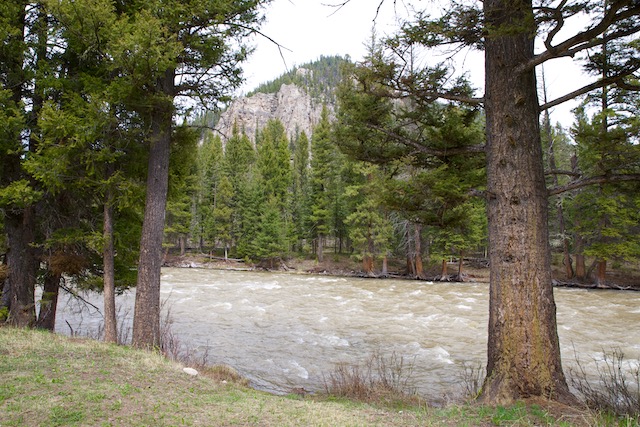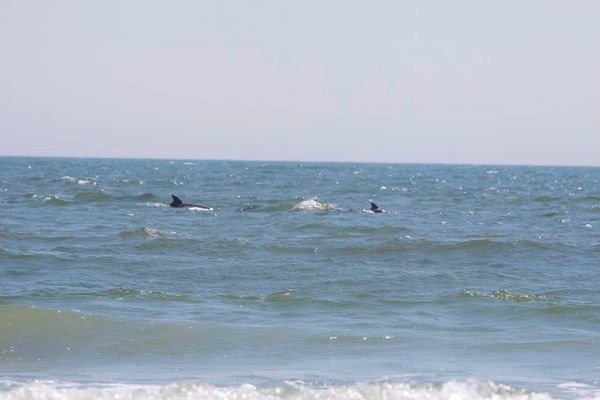The Ghost Of Whitman’s “Open For Business” Lives On At Murphy DEP
We Saw This Coming and our historical facts and warnings were completely ignored, see:
Today, Governor Murphy issued a tribute to Bob Shinn, see:
The press release is appropriately respectful and vague, but the accompanying EXECUTIVE ORDER NO. 330 goes to great lengths to falsify history.
EO 330 notes Shinn’s role as Chair of the Assembly Solid Waste Committee, and implies that he was a leader and “responsible for legislation protecting critical water supplies, establishing mandatory recycling, and addressing handling and disposal of medical waste“.
Let’s take those “achievements” one at a time.
1. That “protecting critical water supply” is a reference to the Tri-County Pipeline project, Shinn’s legislative reaction to DEP’s 1993 regulatory designation of groundwater water supply “Critical Area No.2″ and regulatory limitations on additional withdrawals of water.
DEP Water Supply Plan:
Based upon the low groundwater levels measured in 1983 by the USGS, the NJDEP determined that three aquifers, the Upper, Middle and Lower Potomac-Raritan-Magothy, were so depleted in southern New Jersey that designation of an area of critical water supply concern was warranted. Continued decline of water levels in these confined aquifers posed a threat of serious adverse effects to the water supply in some areas, including the depletion of groundwater supplies, saltwater intrusion, and reduction of groundwater flow to streams. Therefore in January 1993, by administrative order, the NJDEP designated Water Supply Critical Area 2 located in Burlington, Camden, Gloucester, and Atlantic; and small portions of Ocean, Salem, and Cumberland Counties.
The DEP “protected critical water supplies” by regulation. Shinn had zero to do with that.
The legislation to authorize DEP to designate “Critical Water Supply Areas” was the Water Supply Management Act, enacted in 1981, 4 years before Shinn entered the legislature.
DEP designated “Critical Area #1″ under authority of the 1981 Water Supply Management Act in the 1980’s, years before Shinn’s Tri-County pipeline bill amended the Act: (DEP)
Water levels in four confined aquifers in the New Jersey Coastal Plain within Water Supply Critical Area, the Wenonah-Mount Laurel (MLW), the Upper and Middle Potomac-Raritan-Magothy (PRM), and Englishtown aquifer system, have recovered as a result of reductions in groundwater withdrawals initiated by the State in the late 1980s.
DEP Order on Critical Area #2: (1993)
(a) The Department designated Water Supply Critical Area II by administrative order on January 15, 1993. Based upon a regional water supply study substantiated by United States Geological Survey monitoring and modeling, and following public notice and public hearings, the Department determined that the Potomac-Raritan-Magothy (PRM) aquifer system was depleted such that designation as an area of critical water supply concern was warranted.
The Shinn pipeline project (see his 1993 legislative amendments) was enacted AFTER DEP issued the 1/15/93 Order establishing critical area #2. That law was approved on and the effective date of that law, P.L. 1993, c.202 was July 24, 1993. See: C.58:lA-6.b. Permit system; development of guidelines.
Those specific areas previously designated by the department as water supply critical and margin areas, considered as Depleted or Threatened Zones, respectively, prior to the effective date of P .L.1993, c.202 shall be considered to be areas of critical water supply concern for the purposes of P.L.1981, c.262 (C.58:1A-1 et al.) or P.L.1993, c.202 (C.58:1A-7.3 et al.).
That law created a complex water allocation permit credit and trading scheme to enable the Tri-County pipeline.
C.58:lA-7.4 Water Allocation Credit Transfer Program.
5. a. There is established in the department the Water Allocation Credit Transfer Program. The purpose of this program is to provide for the transfer of a privilege to divert water within an area of critical water supply concern, as designated by the com- missioner pursuant to section 6 of P .L.1981, c.262 (C.58: 1A-6), without adversely impacting the aquifer.
The amendments limited DEP authority and created a monopoly private water supply scheme that benefitted a private water company and land development scheme on a smaller scale version than the one described in the classic movie Chinatown. It had nothing to do with water supply protections and everything to do with economic development, privatization of water supply, and monopoly profits.
Shinn’s own 1996 DEP Water Supply Plan made that legislative history absolutely clear:
Water Supply Privatization Act (1993 N.J.S.A. 58:26 1-18)
An act concerning long term contracts between local government units and private firms for the provision of water supply facilities and water supply services, establishing a procedure for the negotiating, awarding, and review of these contracts. The Act provides an alternative means of funding the construction and operation of these facilities.
With respect to the Tri-County Pipeline, Shinn’s 1996 Plan again documented the legislative history:
a. Tri-County Project
The NJSWSP continues to support implementation of this project, as recommended by the 1982 Plan (as updated). The Water Supply Critical Area legislation (A-2250) which allows the NJDEP to restrict withdrawals on stressed aquifers should be implemented as expeditiously as possible. A critical aspect of implementation is the Tri-County Project (funded and owned by the NJ American Water Company) which is located in planning area 17. This project utilizes the Delaware River as the source of supply. The plans are to expand the treatment plant (constructed with a modular design allowing 10 MGD expansions) as needed based on contracts with water supply systems that must reduce their use of the PRM aquifers.
The DEP 1996 Plan acknowledged the flaws with taking more freshwater from the Delaware River:
While water supplies are available to New Jersey planning areas draining into the freshwater portion of the Delaware River (such as the Tri-County Project), DRBC’s regulatory program would strongly discourage new substantial allocations that are depletive in nature unless offsetting storage is provided, existing uses are proportionately reduced by conservation or abandonment, or the new water supply is offset by water imported from outside the Delaware Basin in order to meet the flow maintenance requirements.
The Tri-County project turned out to be a boondoggle: (DEP Water Supply Plan)
While many purveyors are purchasing water from the Tri-County Project, an intake and treatment plant on the Delaware River at Delran, others have yet to contract for the water. As a result, as of May 2007 only 14 million gallons per day (mgd) of the 30-mgd capacity of the Tri-County Project is currently under contract. To operate the project’s surface water treatment plant efficiently, the New Jersey American Water Company (NJAWC) has stopped the use of many of its wells within the Critical Area and is instead using water from the Tri-County Project to supply customers. This has resulted in approximately 2 billion gallons per year of NJAWC base allocation from the PRM going unused. Although water levels in the PRM aquifer system have shown a substantial increase, utilization of this unused ground-water base allocation would reverse the trend of increasing water levels seen in recent years.
2. To his credit, Shinn was involved in passage of the 1987 Mandatory Source Separation And Recycling Act (which established a low 15% – 25% recycling goal).
But Shinn was not a leader in this effort, he was a puppet and followed the policy and political lead of Gov. Kean and his chief environmental policy advisor Robin O’Malley. I worked with O’Malley at the time while I was at DEP and can tell you that he generated the policy ideas for Kean. Shinn had nothing to do with any of this.
Shinn later erased all that and used his legislative platform to OPPOSE Gov. Florio’s 1990 Executive Orders and DEP Solid Waste Plan that dramatically increased the original 1987 recycling goal to 60%; cancelled 15 garbage incinerators in almost every NJ county; put DEP in charge of County Solid Waste Planning decisions; and established the world’s strictest mercury emissions controls for garbage incinerators.
Shinn was pro-incineration and pro-county primacy is solid waste management. He OPPOSED DEP regulation of mercury emissions from garbage incinerators. He OPPOSED DEP leadership over Counties. All were retrograde positions.
(Note: the Kean DEP Solid Waste Plan approved incinerators in each of NJ’s 21 counties. The Florio DEP plan rejected that approach, deemed incineration a “technology of last resort”, and emphasized source reduction, composting, and aggressive recycling regulatory mandates, while putting the State DEP in a true supervisory role over County planning. Shinn rejected all that and restored the Kean plan. Shinn admitted that in a NY Times interview:
Q. Do you plan to build new landfills and incinerators in the state?
A. We’re going to need more disposal facilities for about half of our waste stream. We just can’t rely on Pennsylvania, Ohio, West Virginia or whomever for our disposal capacity. …
… we’re going to try to provide capacity by the year 2000 in-state for the lion’s share of our waste stream — now, I’m not saying 100 percent, but it will certainly be in the 90 percentile by that point. In order to do that, you have to build facilities like refuse-derived fuel facilities, compost facilities, landfills and some incinerators. But that decision is really the counties’ decision.
I testified before Shinn to defend the Florio plan and withstand his attacks and have first hand experience and can tell you that Shinn was no environmental leader on solid waste.
The first thing Shinn did at DEP in 1994 was to support a Legislative Resolution to strike down the Florio DEP Solid Waste Plan and abolish the Florio DEP Mercury Task Force.
EO 330 also touts Shinn’s role at the Burlington County landfill (calling it a resource recovery facility is misleading). Omitted was the fact that, to fund that facility, Shinn used a $5 million portion of $17 million restored by the Legislature to offset Gov. Whitman’s massive cuts to DEP’ budget.
3. To his credit, Shinn was involved in passage of the 1989 Medical Waste Management Act.
This law again was a reaction to medical waste washing up on NJ beaches, which triggered public outrage.
But Shinn was not a leader in this effort, he was a puppet and followed the policy and political lead of Gov. Kean and his chief environmental policy advisor Robin O’Malley. I worked with O’Malley at the time while I was at DEP and can tell you that he generated the policy ideas for Kean. Shinn had nothing to do with any of this.
Omission of critical facts is a lie and a falsification of history.
And the above 3 points only related to critical omissions of facts that offset Shinn’s alleged accomplishments.
Totally ignored was Shinn’s implementation of Gov. Whitman’s wholesale attack on DEP as an institution and her dismantling of DEP programs and regulations under Executive Order #27.
So, let me reiterate some of that:
A comprehensive source of information on Shinn’s DEP record can be found in Christie Whitman’s US Senate Confirmation hearing transcript . That transcript provides testimony that documents that record, which was one of “failing a core mission”. Don’t miss my friend Bill Neil’s testimony.
There was extensive critical press coverage of Shinn’s record, so these facts are readily accessible.
The Bergen Record even won a journalistic prize in environmental reporting, based on Whitman’s own slogan that NJ is “Open For Business”. See the Bergen Record’s award winning expose series which won a national journalism award for “A New Genre of Environmental Reporting” the John B. Oakes Award for Distinguished Environmental Journalism.
Bob Shinn was DEP Commissioner for 8 years under Gov. Whitman’s “Open For Business” administration. He presided over the huge (30%) downsizing of DEP’s staff and budget and his first priority and actions were to abandon the Florio DEP’s nationally leading Solid Waste Management Plan, dismantle the Mercury Task Force, and gut the implementation of the Pollution Prevention Act.
I have a written transcript of sworn testimony by former DEP Assistant Commissioner Richard Sinding stating that Shinn misled the Gov. and directed Sinding to flat out lie about the science, toxicity, and public health risks of mercury (Shinn fired me for blowing the whistle and leaking his memo to Whitman that put those lies and a cynical proposed PR campaign in writing).
He was the least qualified DEP Commissioner in DEP’s history.
I trust that DEP’s press release will accurately reflect this history and not be a hagiography.
Finally, EO 330 touts Shinn’s accomplishments at DEP. Again, total distortion and lies by omission and commission.
Shinn’s so called Climate Action Plan was linked to Whitman’s “Sustainable State Initiative”, which was pure PR cover for environmental dismantling under Whitman’s deregulatory EO #27, 20%+ budget and staff cuts, “Open For Business” campaign, and “Strategy For Regulatory Reform (STARR) initiatives.
Shinn’s climate plan was purely voluntary and set aspirational goals that were a joke, even at the time, not half of Kyoto’s modest goals: (DEP press release)
Shinn announced plans to reduce the emissions of carbon dioxide, methane, nitrous oxide, sulfur hexafluoride, hydroflurocarbons and fully fluorinated compounds by 3.5 percent below the 1990 levels by the year 2005.
Shinn’s alleged “leadership” on air quality was to point the finger at other States (long range transport) and thereby protect NJ polluters. He allowed consultants for NJ polluters to effectively privatize the DEP air permit program by allowing them to write permit regulations and technical manuals. (They called it “re-engineering”. It was done in response to withering criticism of DEP’s permit programs by the business community, primarily NJ BIA, Chemistry Council and Chamber of Commerce. The attack on the air program was successful and got no pushback from environmental groups and media. A similar attack was launched on the water programs, which was what drove the Whitman DEP’s “Mega-Rule” rollback. That attack failed and was defeated by environmental groups and critical media coverage.)
Shinn dismantled DEP enforcement across the board, with Grace periods, self disclosed immunity, voluntary compliance, technical assistance, dramatically reduced inspections and fines collected, et al.
Whitman/Shinn’s budgets cuts and continuing diversion of hundreds of millions of dollars of environmental money (larger than her predecessors) led to voter approval of the dedication of 4% of the Corporate Business Tax to DEP. (I did the research and was architect of that).
Whitman/Shinn deregulatory pro-business policies led to 1997 passage of the Brownfields law that weakened toxic site cleanup standards and the Watershed Management Act which created a voluntary locally based planning process as an alternative to Clean Water Act regulation. I was involved in drafting both bills with Sierra Club and am embarrassed to admit that I was duped and co-opted. Whitman later led the misguided legislative effort to deregulate energy. Whitman reversed Florio’s consolidation of energy into DEP to form DEPE, reverting back to DEP.
Shinn gutted the NJ Pollution Prevention Act and he bragged about it in a NY Times interview:
Q. Are you planning any specific reforms for pollution and toxic-release prevention?
A. We have been working on an emissions-reduction program to make it more of a planning function than an enforcement function. It’s not an area where we fine somebody for emissions; it’s a function to plan to reduce emissions from a totalistic standpoint.
All bad.
What’s even more appalling than Gov. Murphy (with the obvious input of his former corporate lawyer DEP Commissioner LaTourette) whitewashing and falsifying this history is that the NJ media will print it wholesale and ignore the history that they reported on at the time.
Specifically, as I previously wrote, the Bergen Record won a national journalistic prize for the critical series called “Open For Business” that exposed the Whitman DEP record for the pro-corporate sham it was. (see:
It will be remarkable if the Record goes along with Murphy and denies their own history and throws the work of their dead reporters under the bus.
The same goes for the Star Ledger.
Jim O’Neill and Tom Moran know better. Shame on them all if they do that.




